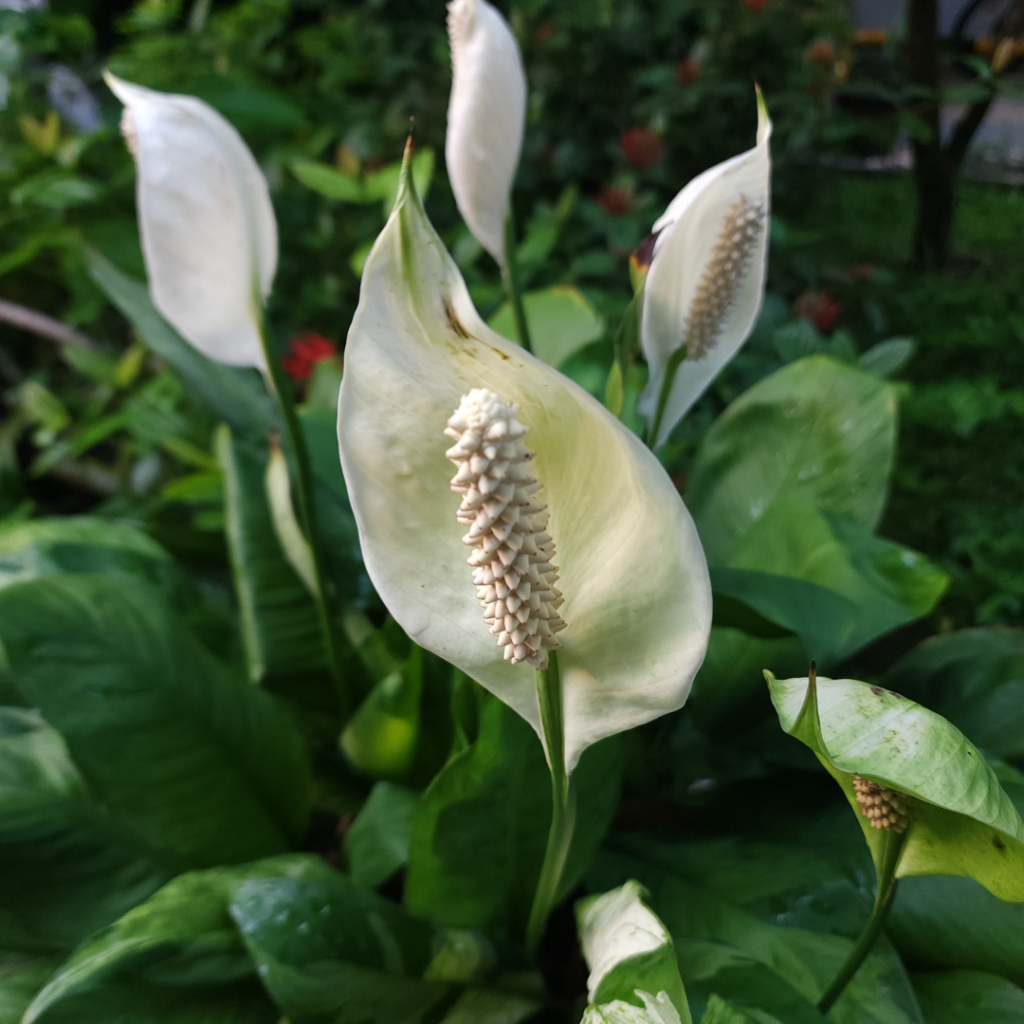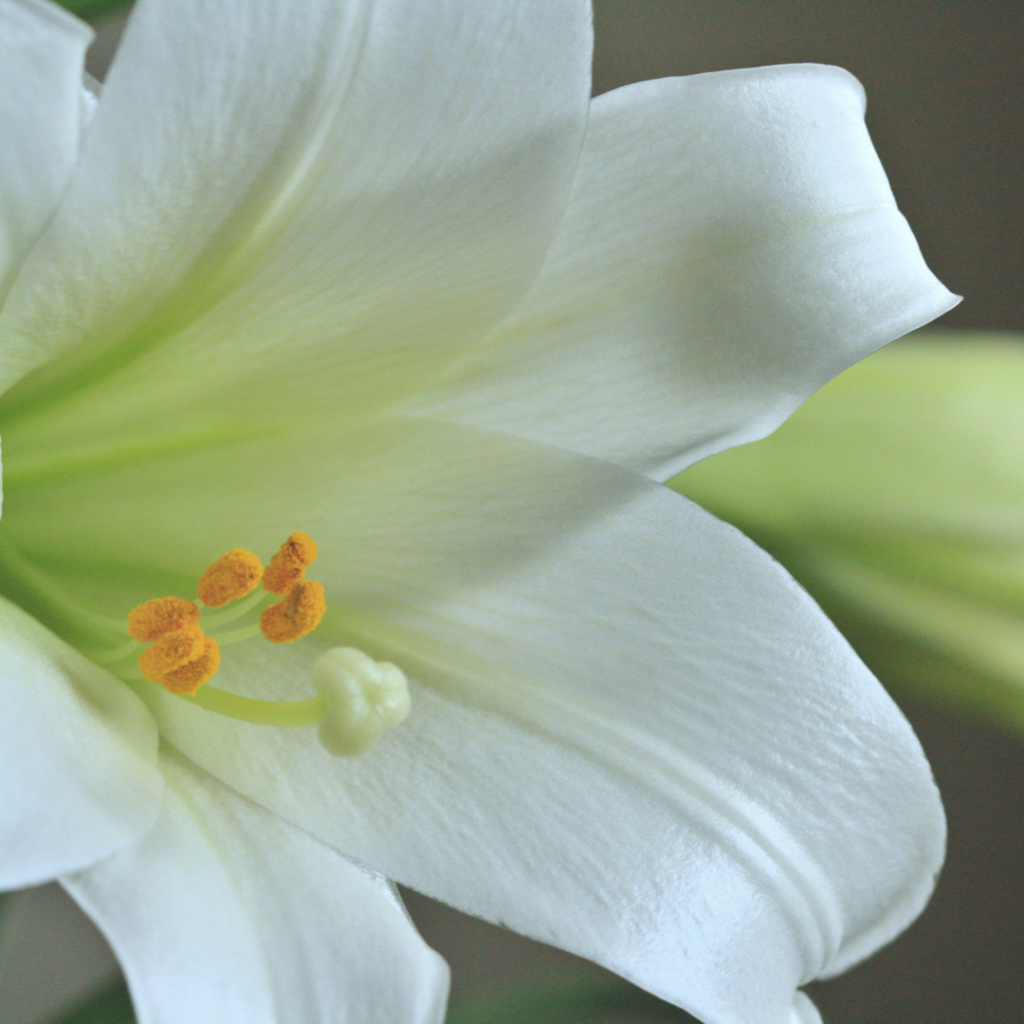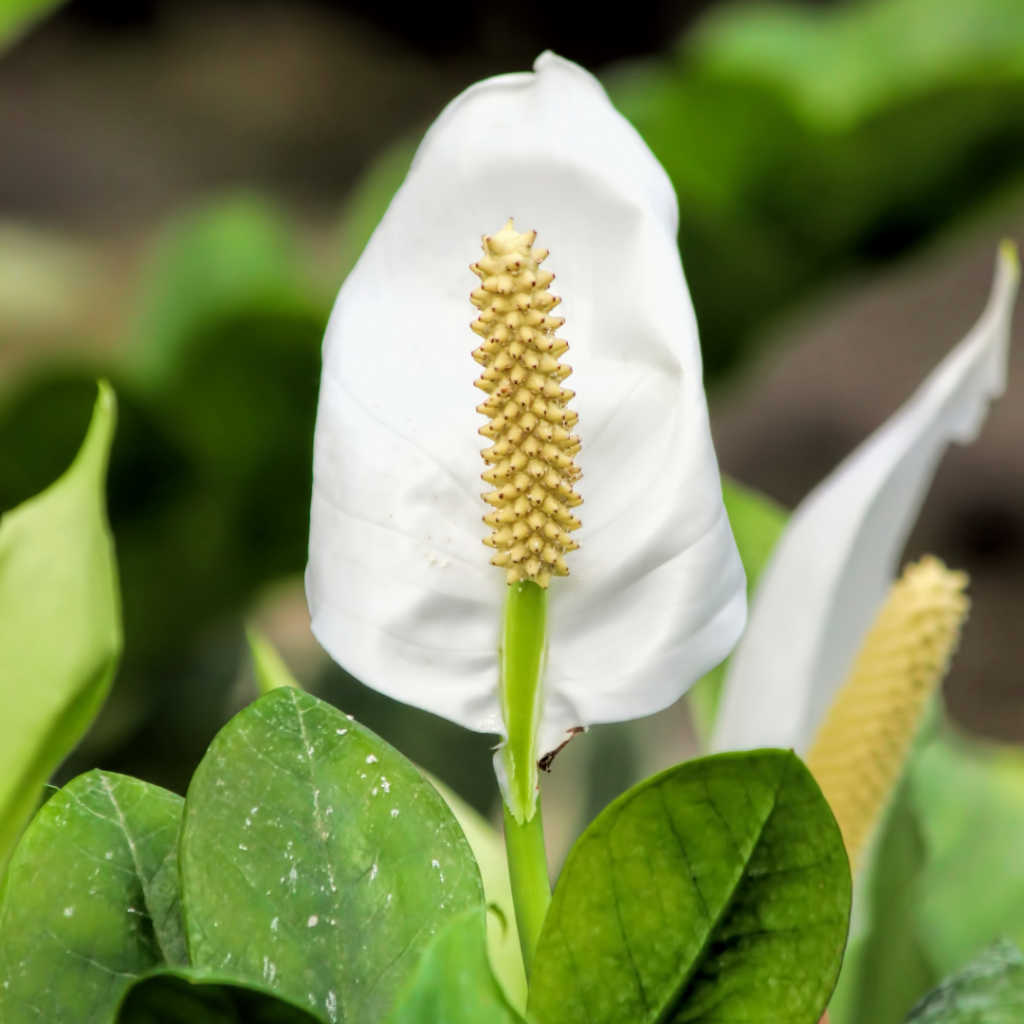One of the most mesmerizing plants, the peace lily, is indigenous to the tropics of Southeast Asia and the Americas. The flowers, often called spathes or peace lilies, are recognizable and distinctive and look lovely in any environment. Keep reading for my tips on how to grow peace lily outdoors.
The peace lily is a plant with green leaves that are spotted with different colors. Most people think that the peace lily can only be grown indoors, but that\’s not true.
Still, you should know that the peace lilies grow outside in the right conditions. So, you must ensure you give the plant the right environment. The peace lily grows best in a warmer place with some shade. The main reason why so many people grow peace lilies indoors is that they can better control the environment.
We will give you some advice in this article on how to cultivate healthy peace lilies in your yard.

RELATED: Care For Peace Lily Indoor: Proper Care Guide For Healthier Plants
Can You Cultivate Peace Lilies Outdoors?
The answer is ”yes,” but there are some very important rules. In general, peace lilies can only be grown outside in USDA hardiness zones 10, 11, and 12.
If your hardiness zone is too cold, you might not be able to grow peace lilies in the ground outside. But if you feel more comfortable growing your potted peace lilies outside, you can bring them inside during the winter to protect them from bad weather.
Growing Peace Lilies Outdoors
The simple, thin, brilliant green leaves of the evergreen perennial peace lily may reach a length of one foot. It makes a dense cluster. The plant\’s actual blooms are tiny and around a spadix, which is a stalk. A single, creamy-white leaf, or spathe, carried on a tall stem, encircles the spadix.
There are various peace lily species, and hybrids have produced a broad range of peace lily cultivars, some of which may form clumps up to five feet wide and six feet tall. You can make sure your peace lilies grow outdoors and flourish by providing them with the correct environment and care.
- Light Requirement
The peace lily can’t stand being in the sun for too long. The plant thrives in partial shade and needs protection from direct sunlight. Keep the plant in a dappled shadow as much as possible as it flourishes there to ensure your peace lily survive.
The peace lily is a tropical plant that grows in the shade of tropical rainforests. If you can\’t locate a space for your plants beneath a tree, think about giving them a fake canopy or placing them next to your house\’s roof overhang to ensure your peace lilies survive outdoors.
Prolonged sun exposure may cause the plant to burn out and get sunburns, which might ultimately limit its ability to grow. In extreme circumstances, this may even completely kill a young plant if it is not addressed. This plant may tolerate the morning sun for about an hour, but the afternoon sun must be avoided. Your plant might suffer severe damage from the midday sun\’s sweltering heat.
Sunburn is a major problem for peace lilies, particularly if they are planted outdoors. The hot afternoon hours are really dreadful for this plant. Thus, if you leave your peace lily outdoors in the sun without any cover, it will surely die, particularly if it gets a lot of sun where you live.
If your plant won’t get adequate shade outdoors, consider growing it indoors. Everything depends on where the plant is positioned and how much sunlight your yard gets. This plant has a far greater chance of surviving outside if you\’re ready to build a cover for it.
- Fertilizer And Soil
The peace lily likes nutrient-rich, draining soil that is also healthy. If the soil does not drain well, the plant will have serious problems since waterlogging may quickly damage the roots.
One of the finest things you can do for the peace lily plant is to be sure to incorporate compost when planting it. Consider purchasing plant fertilizer if you still need to compost at home. It\’s important to fertilize the plant sometimes, particularly when you first put it outdoors.
Apply mulch all around the plant to shield the soil from the weather and aid in the peace lily\’s proper development.
Overall, whether cultivated inside or outdoors, the peace lily is a low-maintenance plant that only needs a small quantity of fertilizer over the course of its lifespan.
When summer approaches, you may use a 10-10-10 combination fertilizer to maintain the plant in excellent condition. This has 10% of potassium, phosphorus, and nitrogen. When cultivated inside, this plant often requires a 20-20-20 formula; however, 10-10-10 works well for outdoor plants.
You should choose to plant your outdoor peace lily at the end of spring since fertilizer might be helpful for growing this plant outside. In this manner, you may enrich the soil outside before planting your peace lily there, improving its chances of survival.
- Water Requirement
Due to its big leaves, the peace lily plant has a tendency to lose a substantial amount of moisture over time. Check the water flow in the soil to make sure the plant is receiving adequate water. If grown outdoors, it will eventually lose even more moisture; thus, it\’s crucial to establish a regular watering schedule.
Create a timetable for watering. While overwatering may happen even with tropical plants, you won\’t need to worry about it because of that, so always check the soil before adding more water.
Proper watering techniques are required since too much moisture may cause root rot and spread a variety of fungal diseases to the plant. As it can hold more water when the temperature drops in the winter, you should water your peace lily a bit less regularly. The simplest way to tell whether your plant needs water is to use your finger to probe the soil and feel for dryness. If the soil is dry, add more water to the plant.
If the soil seems wet to you, it is advisable that you wait a day or two before watering again. In order to maintain the plant\’s health during the summer, you should water it several times each week. Outdoor peace flowers need a little more care than indoor peace lilies, which need weekly watering.
Both cold water and chlorinated water should not be used on this plant because of their sensitivity to both. Make use of warmed or room-temperature filtered water. You may buy items, like a fish tank tap water conditioner, to make this process easier by removing chlorine from the water your plants consume.
Read more about watering Peace Lilies.
Are Peace Lilies Invasive?

You could worry about bringing an invasive species to the outside environment if you decide to plant your peace lily outdoors. Fortunately, peace lilies are often non-invasive. New growth arises from the roots up rather than from the mother plant\’s stem. Afterward, the new growth forms separate roots that allow for separation from the parent plant and later translocation.
Yet, purposeful propagation is the only viable method to multiply your plant. As a result, you won\’t need to be concerned about your peace lilies encroaching on your or your neighbor’s property. Regular trimming may protect peace lilies from outgrowing your outside area if you are concerned about this happening.
RELATED: How To Save Peace Lily With Brown Leaves: Causes and Essential Fixes
Are Peace Lilies Pest-Magnets?
Peace lilies are, unfortunately, prone to outdoor pests. The peace lily will be planted outdoors, which increases the likelihood that it may come into contact with diseases and pests. If you ignore the warning symptoms of infestation, it won\’t take long for the plant to be attacked by common pests and insects such as scales or mealybugs. In the event that their growth is unregulated, aphids may also cause damage to the plant.
You need to routinely apply a pesticide to your peace lily and keep a careful check on it in order to notice signs of an infestation. If you choose not to use a chemical pesticide, eco-friendly alternatives such as neem oil, diatomaceous earth, and organic dishwashing liquid may be used.
If you have a mealybug infestation, it may grow quickly. Developing a white residue on the plants is a sign of a serious infestation. Luckily, eliminating these pests is not a major problem. All you have to do is spray the plant often for a few weeks with your chosen pesticide. Periodically, the peace lily will also need pruning.

Are Peace Lilies Considered Toxic?
If any part of the plant is swallowed, the calcium oxalate crystals may irritate the tongue and throat and make humans and animals uneasy. Outdoor peace lilies should ideally be kept in a gated location away from small children, dogs, and kids.
You may put your peace lily anywhere you want outdoors if you don\’t have any dogs or kids. They won\’t irritate you just by touching them; eating them is the only risky option.
Are Peace Lilies Frost Tolerant Plants?
If you live in a region that experiences frosts, it is preferable to keep the peace lilies in their pots and bring them inside before the weather becomes chilly.
RELATED: How To Divide Peace Lily: All That You Need to Know
Final Thoughts
With the right placement and upkeep, you may enjoy magnificent peace lily plants in your yard for many years to come. But remember that growing peace lily outdoors is a continuous process and that in order for your plant to thrive, you\’ll need to provide it with frequent maintenance.
Thank you for reading my tips on how to grow peace lily outdoors, make sure to check out our other articles:
Growing Snake Plants Outside: Can They Thrive Outdoors? Answers And More!
11 Outdoor Foliage Plants To Arrange Your Garden Like A Professional Landscape Designer
30 Vibrant Types of Red Succulents for Indoor and Outdoor Gardens







